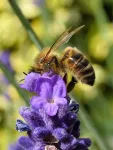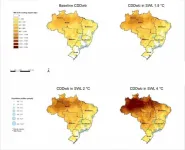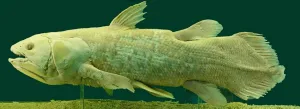(Press-News.org) Yams are a staple food in West Africa, which produces over 90% of the world's yams each year. Yams play a key role in the food security, economic income, and traditional culture for the region.
While they are commonly assumed to be the same as sweet potatoes in the U.S., yams are a completely different plant. The yam tubers are much starchier and drier compared to sweet potatoes. Yams are native to Africa and Asia, and most Americans have never had a true yam.
Even though yam is a staple crop for West Africa, there has been limited research to improve the genetic diversity or productivity.
Researcher Shinsuke Yamanaka focuses on improving crop breeding resources for yams. His research was recently published in Crop Science, a journal from the Crop Science Society of America.
The goal of Yamanaka's research was to increase the knowledge about the genetic information within yams - to help with future endeavors of breeding more varieties. Presently, there is little information for breeders to rely on - so Yamanaka is creating a type of "library" of information for future yam breeders.
There are more than 600 species of yams. The research team focused on the white Guinea yam because of its economic importance.
Farmers in tropical and sub-tropical Africa rely on yams to make a living. But yams are not an easy crop to grow.
Yams can take up to 11 months to grow before harvest. Also, the male and female flowers grow on different plants, so it is hard to time pollination correctly for a successful breeding.
"The long growth cycle, inconsistency in flowering between plants, and polyploidy are major limitations of the yam breeding study," explains Yamanaka.
In addition to improving those characteristics, breeding new varieties can increase the crop yield, improve cooking properties, and decrease harvesting time. These would be beneficial for farmers.
When scientists breed crops, it can take several years to identify which plants have the best traits to be used as parents. Once the parent plants are chosen, the breeding process can continue as the plants are cross pollinated to create new, improved offspring.
Previous research has focused to collect and characterize genetic material from countries in the "yam belt" of West Africa. But maintaining this large collection is a challenge. Researchers wanted to better understand the physical and genetic variations of plants in the collection.
To do this, researchers used molecular markers. Molecular markers are segments of DNA that correspond with certain plant characteristics. This helps researchers predict what the plant will be like based on DNA instead of growing and observing the plant.
The team used plant material from over 400 yam plants, and DNA was extracted for analysis.
Researchers were able to reduce the size of the collection by eliminating plants that were genetically similar or not unique. A total of 100 yam plants were found to be unique, which will make up the new smaller collection.
Important agronomic traits were recorded about each plant in the new collection. These traits included the number of stems per plant, the growth period, number of tubers per plant, yield, and tuber weight.
In breeding terms, this is a "mini-core collection." Similar collections are available for rice, millet and palm, among other crops.
This smaller collection will be much easier to maintain and gather information from. And creating new, preferable types of yams will help African farmers.
Breeding better crops takes time. This collection of genetic resources will help scientists save time as they evaluate and select which plants to use for breeding.
"Although our research is just the beginning of better utilization of the wide genetic diversity in yam, we hope our research will pave the way to improve yam breeding for farmers," says Yamanaka.
INFORMATION:
Shinsuke Yamanaka is a researcher at the Japan International Research Center for Agricultural Sciences (JIRCAS). This work was conducted by JIRCAS in collaboration with Iwate Biotechnology Research Center (IBRC) and International Institute of Tropical Agriculture (IITA), and was partly supported by the Japan Society for the Promotion of Science (JSPS).
American Society of Agronomy, Soil Science Society of America, Crop Science Society of America: Collectively, these Societies represent more than 12,000 individual members around the world. Members are researchers and professionals in the areas of growing our world's food supply while protecting our environment. Together we work toward solutions to advance scientific knowledge in the areas of agronomy, crop science, and soil science.
Twitter: @ASA_CSSA_SSSA & @SSSA_soils | Facebook: ASA, CSSA & SSSA | Instagram: @sustainablefoodsupply & @iheartsoil
Tungsten hexanitride with armchairlike hexazine N6 ring has been synthesized by a group of scientists led by Dr. Jin Liu and his former postdoc Nilesh Salke at HPSTAR (Center for High Pressure Science & Technology Advanced Research). WN6 is a promising high-energy-density and superhard material. Their findings are published in the recent issue of Physical Review Letters.
Diatomic nitrogen is the most abundant molecule in Earth's atmosphere accounting for almost 78% volume. The strong triple bond in nitrogen makes it very stable and unreactive at near ambient conditions. However, in the intense-pressure and high-temperature conditions, nitrogen will behave entirely differently, it can form double- or even single-bonded structure or react with other elements ...
As abundant and widespread bees, it is common to see both bumble bees and honey bees foraging on the same flower species during the summer, whether in Britain or many other countries.
Yet researchers at the Laboratory of Apiculture and Social Insects (LASI) at the University of Sussex, have found that different bees dominate particular flower species and revealed why.
By studying 22 flower species in southern England and analysing the behaviour of more than 1000 bees, they found that 'energy efficiency' is a key factor when it comes to mediating competition.
Bee bodyweight and the rate at which a bee visits flowers determine how energy efficient they are. Bodyweight determines the energy used while flying and walking between flowers, with a bee ...
Space cooling already accounts for 14% of residential electricity demand in Brazil, and it is expected to increase further because of climate change.
Very few studies investigate the relationship between climate change, cooling needs, and electricity demand. In a new study in Energy and Buildings, a team of researchers from Universidade Federal do Rio de Janeiro and CMCC@Ca'Foscari - a joint program of Ca'Foscari University of Venice and CMCC Foundation - investigate how climate and income during the period 1970-2010 shaped cooling services in Brazil. This historical relationship allows projecting the resulting energy demand for cooling services across three warming scenarios: +1.5°C, +2°C, +4°C.
The study shows ...
WEST LAFAYETTE, Ind. - Emerging robotics technology may soon help construction companies and contractors create buildings in less time at higher quality and at lower costs.
Purdue University innovators developed and are testing a novel construction robotic system that uses an innovative mechanical design with advances in computer vision sensing technology to work in a construction setting.
The technology was developed with support from the National Science Foundation.
"Our work helps to address workforce shortages in the construction industry by automating key construction operations," said Jiansong Zhang, an assistant professor of construction ...
The findings add to current knowledge of how insects fly and keep stable in the air. They could also help to inspire new designs in small aerial vehicles like drones, which can be useful for search-and-rescue attempts and building inspection.
Our colourful sunny-day companions can glide, fly backwards, and travel up to 54 km/h when hunting prey or escaping predators - but like any flying creature, they can be thrown off balance and even find themselves upside down.
Many land-based animals like cats, and aerial animals like hoverflies, rotate themselves around a head-to-tail ...
During a study with captive vampire bats at the Smithsonian Tropical Research Institute (STRI) in Panama, a young vampire bat pup was adopted by an unrelated female after its mother died. Although this observation was not the first report of adoption in vampire bats, it is uniquely contextualized by more than 100 days of surveillance-camera footage. This footage captured by STRI research associate Gerry Carter's lab at Ohio State University reveals intimate details about the changing social relationships between the mother, the pup and the adoptive mother throughout their time in captivity.
"The adoption took place after a very sad but ultimately serendipitous occurrence," ...
Adopting policies that are consistent with achieving the Paris Agreement and prioritise health, could save 6.4 million lives due to better diet, 1.6 million lives due to cleaner air, and 2.1 million lives due to increased exercise, per year, across nine countries.
New research from The Lancet Countdown on Health and Climate Change published in a special issue of The Lancet Planetary Health journal highlights the benefits to health if countries adopt climate plans - Nationally Determined Contributions (NDCs) - that are consistent with the Paris Agreement aim of limiting warming to "well below 2°C". [1,2]
The countries considered in the study represent ...
The notion of social distancing rose to public prominence approximately a year ago, when health officials began recommending it as a way to slow the spread of the novel SARS-CoV-2 virus. Despite the novelty of the concept among many contemporary human audiences, social distancing has considerable precedent among animals.
Writing in BioScience, Mark Butler of Florida International University and Donald C. Behringer of the University of Florida outline the role of social distancing in nature and compare it with its human counterpart. They describe numerous animals in which distancing has evolved, including guppies, chimpanzees, birds, ants, and mice, among many others. ...
The capture of the first living Coelacanth, a mighty ocean predator, off the coast of South Africa caused quite a stir in 1938, 65 million years after its supposed extinction. It became known as a "living fossil" owing to its anatomy looking almost identical to the fossil record. But while the Coelacanth's body may have changed little, its genome tells another story.
Toronto scientists have now revealed that the African Coelacanth, Latimeria chalumnae, gained 62 new genes through encounters with other species 10 million years ago. Their findings are reported in the journal Molecular Biology ...
Headlines like "Black Friday Shoppers Trampled in New York" and popular television shows such as "Extreme Couponing" remind us how crazy consumers can get about retail sales promotions. This enthusiasm for getting bargains has been termed "deal proneness."
Past research has indicated that, to some degree, people become deal prone through being taught by their parents. But a new paper, "Born to Shop? A Genetic Component of Deal Proneness," published in the Journal of the Association for Consumer Research, provides evidence that our genes also play a role in causing bargain-hunting enthusiasm.
To demonstrate this genetic factor, authors Robert Schindler, Vishal Lala, and Jeanette Taylor ...






